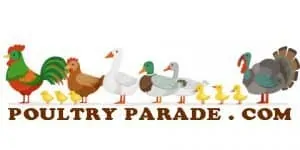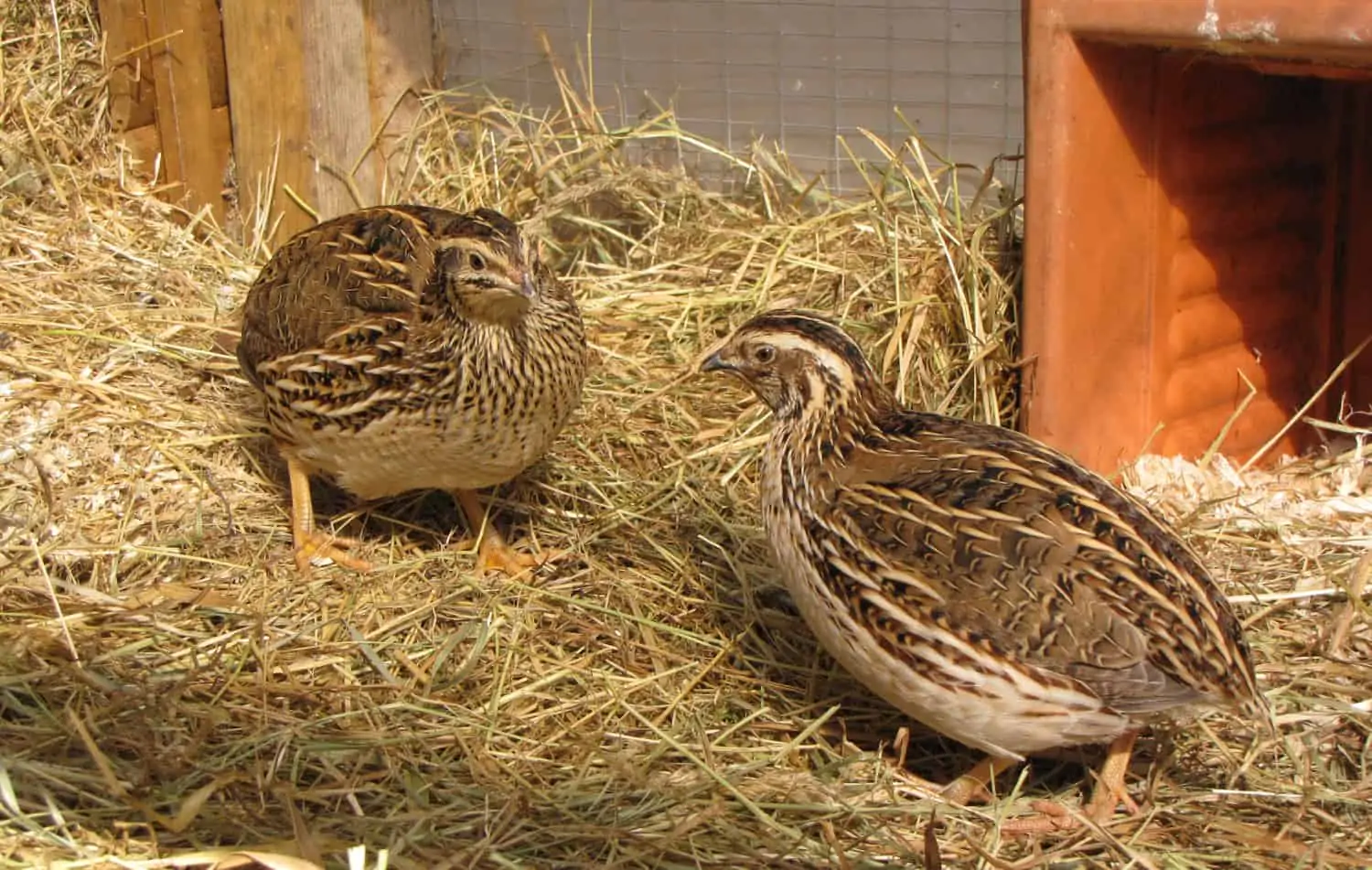Coturnix quail are a great backyard pet or livestock for beginners and experts alike. They are inexpensive, easy to care for, and they take up relatively little space. But what do you need when starting out?
This article will go through what you will have to purchase or build to keep quail happy, healthy, and reproducing. You’ll find out what they need in their cage, how many quails you can keep together, and whether or not quail need nesting boxes.
What do you need to keep quail?
You don’t need a lot of equipment to keep quail, but there are some things you will need. You’ll want to make sure that the quail have a safe place to live, a place to eat and drink, and preferably a place to dust bathe. Let’s start with these essentials. Afterward, we will focus on what is needed to incubate quail eggs and breed chicks.
Table of Contents
Quail Housing
There are two options for quail housing: aviaries and cages where your colony or individual birds are elevated off of the ground. Housing should have facilities to ensure comfort for the birds, make food and water easily accessible, and permit sufficient sanitation. The aviary or cage should also be covered by a roof that keeps the entire place dry.
Aviaries vs. cages
Personally, I prefer aviaries as cages remind me of industrial agriculture operations, which is not what most backyard farmers want. However, some people prefer to use cages because they are can be easier to clean as the quail dropping will fall through the wire grid floor. This is not the case with aviaries, where droppings accumulate on the ground below and need to be cleaned out.
Aviaries and cages can be made from various materials, including wire mesh and any other durable material, like wood. What’s most important is to make sure the quail have a safe place against predators during all hours of the day. Making their home predator-proof is key and should be done with great care.
There are also other considerations when choosing what kind of housing would work best for you: how much space do I have? What kinds of predators may visit my property? What is my budget? Do I need something portable, or can I leave it up permanently? Will my quail be housed indoors or outdoors?
Both types of housing have advantages and disadvantages, so it’s best to do your research on the matter before deciding which is appropriate for you.
One other thing to keep in mind is that quail are very skittish, and they will fly up vertically if they get scared. In cages, this is not a big problem as they can’t get momentum to hit the ceiling. But in an aviary, there must be at least seven feet of clearance from the ground to the ceiling.
How Many Quail Can Be Kept Together?
Adult quail need at least two square feet of floor space per bird. Quail become more aggressive as they grow up, so the number of quails you can keep in one pen will depend on how much room is available and their respective ages.
The exact amount of floor space required to keep healthy and happy birds depends on many factors, including breed, number of males, etc. As your colony grows, make sure that you don’t overcrowd your housing. This can lead to disease, brutal fights, and other behavioral problems.
Backyard quail kept in an aviary require hiding places and a sufficient amount of room for roaming around on the floor. Ensure plenty of good bedding material in the aviary that your quails will enjoy – straw, hay, sand, wood shavings are all appropriate materials depending on what you have available.
Young quail should not be kept with older quail, as the older quail will not tolerate them and might injure or even kill them. They may look cute, but they can be very brutal to each other.
What Do Quail Need in Their Cage?
Your quail aviary will need a few things to be happy and healthy:
- feeders and waterers
- hiding places
- bedding materials
- a place where they can dust bathe
Feeders and Waterers
Feeding and watering are the most important tasks for a quail keeper. The feeders and waterers need to be filled at all times, and it’s important to keep the water fresh. If quail run out of feed or drink, they will start pecking at each other, and cannibalism can ensue.
Quail feeders can be any container that will hold enough food for at least a day. The holes in the feeder should be large enough that quail are not likely to get their heads stuck but small enough that the quail can’t scatter their feed across the cage.
An adult Coturnix quail requires about a quarter pound of feed per week. A larger feeder means you won’t have to refill it as often, but large feeders usually also have bigger holes which means more mess and more waste. I recommend a medium-sized feeder intended for young chickens.
Waterers should be provided in the quail’s cage. The waterer should have a big enough opening that they can drink easily but small enough holes to keep out most debris and droppings. They can’t swim and should not have need a deep waterer.
Hiding Places
Coturnix quail are ground feeders that prefer to stay near the ground. They need to feel comfortable and safe, with plenty of places to hide.
Ideally, the first foot or so of the mesh walls should be covered by something the quail can’t see through. This keeps them from freaking out whenever a cat or other potential predator passes by. You can use OBS boards or other building materials, but I have planted dense vegetation around the edges of the enclosure instead.
Inside the aviary, quail need many places to hide from scary things and from bullies. One way is to provide plenty of little shrubs and leafy plants. These plants will provide your quail with plenty of places to hide and a sense of security from predators.
I also recommend you place several shelters – small wooden structures that can be purchased from pet suppliers or made at home. Quail will spend their time in these hideaways, and they’ll provide a great place for the quails to lay eggs without being interrupted.
You will also need to protect your quail against bad weather. Quail can survive in quite cold climates, but they need to remain dry, and their shelters should be free of draft. Add lots of hay or other bedding materials that they can burrow into to stay warm during the winter.
Dust Baths
Dust bathing is necessary for most poultry because it cleans the feathers and prevent parasites from taking over. Quail love dust bathing and they can spend hours flapping around in the dustiest spot they can find before settling down for some serious grooming time.
All they need for a good dust bath is dry, loose dirt. But if you add some ashes from your wood stove into the mix, the tiny particles will reach the most inaccessible parts of the quail’s feathers and really get them clean.
I recommend you build a little sandbox for your quail, and add at least two inches of the dirt mixture inside. This will keep the dust (somewhat) contained and make it easy for you to top up with more dirt as the quail spread it all around.
Do Quail Need a Nesting Box?
Domesticated Coturnix quail are not inclined to use a nest box. Generations of hatching with incubators and little focus on natural breeding have left most quail with a very limited instinct to use a nest.
Poultry keepers sometimes describe the nesting habit of Coturnix quail as non-existent. However, you can encourage nesting by adding straw or hay in one corner of the cage, but many quail will still lay their eggs wherever they happen to be at the moment.
If you want to provide a nesting box, then we recommend making it an enclosed space with one side open. This will allow the quail to lay her eggs without feeling too exposed. Many people who raise quail do provide some form of enclosed nesting space because encouraged nesting can potentially keep eggs cleaner and easier to find.
Equipment for Raising Quail Chicks
If you want to hatch and raise your own quail, you have two options: Using a broody quail hen or hatching the eggs in an incubator.
Although some people have had luck using a broody hen, my experience has not been as successful. I have had a quail hen go broody, only to abandon the eggs a few later, and I have had entire flocks of quail hens who never go broody at all.
Trying to raise quail the natural way is, in my mind, a very noble but difficult task. If you want a much higher chance of success, I suggest you buy an incubator.
For the purpose of this article, we will only go over what is needed to create an environment for raising quail in an incubator. If you want more information on incubating eggs under a broody hen, please consult this very informative article on the matter.
To incubate quail eggs, you will need:
- Fertilized eggs
- An incubator. I recommend the Kebonnixs incubator with a built-in candler and automatic egg turner. This incubator does most of the work for you after it’s been set up. All you need to do is add some water through the external water top. It’s almost set and forget until it chirps at you.
- A cage for the newly hatched. A rabbit cage is an excellent option. Just ensure that those tiny little chicks can’t get out through the bars.
- Quail feed and water dishes.
- Bedding. I recommend pine or aspen shavings on top of newspaper. It’s safe, clean, and not too expensive.
- A heat source. Heat lamps are the old-fashioned method, but I’m not a fan as the light keeps your chicks awake during the nights. Instead, I highly recommend heating plate brooders. They’re also more energy-efficient and less of a fire hazard.
In Summary: A Quail Keeping Equipment Checklist
Quails are a great option for rural and suburban homeowners alike because they are easy to take care of, take up limited space, and produce delicious meat. As quail keepers, it’s our job to ensure that our birds have sufficient dry space, clean food and water, plenty of places to hide from predators or other animals in the home, and enough room so that they don’t get into fights.
Below is a compiled list of the items mentioned that every quail keeper needs to purchase or make. If you have these items, then you’re good to go.
- A quail cage or pen that protects against wind and predators
- Feeders and quail feed
- Waterers
- Shelters and/or nesting boxes
- bedding materials
- A shovel and a bucket to clean the aviary or cage
- Incubator, brooder, and heat lamp to raise chicks


